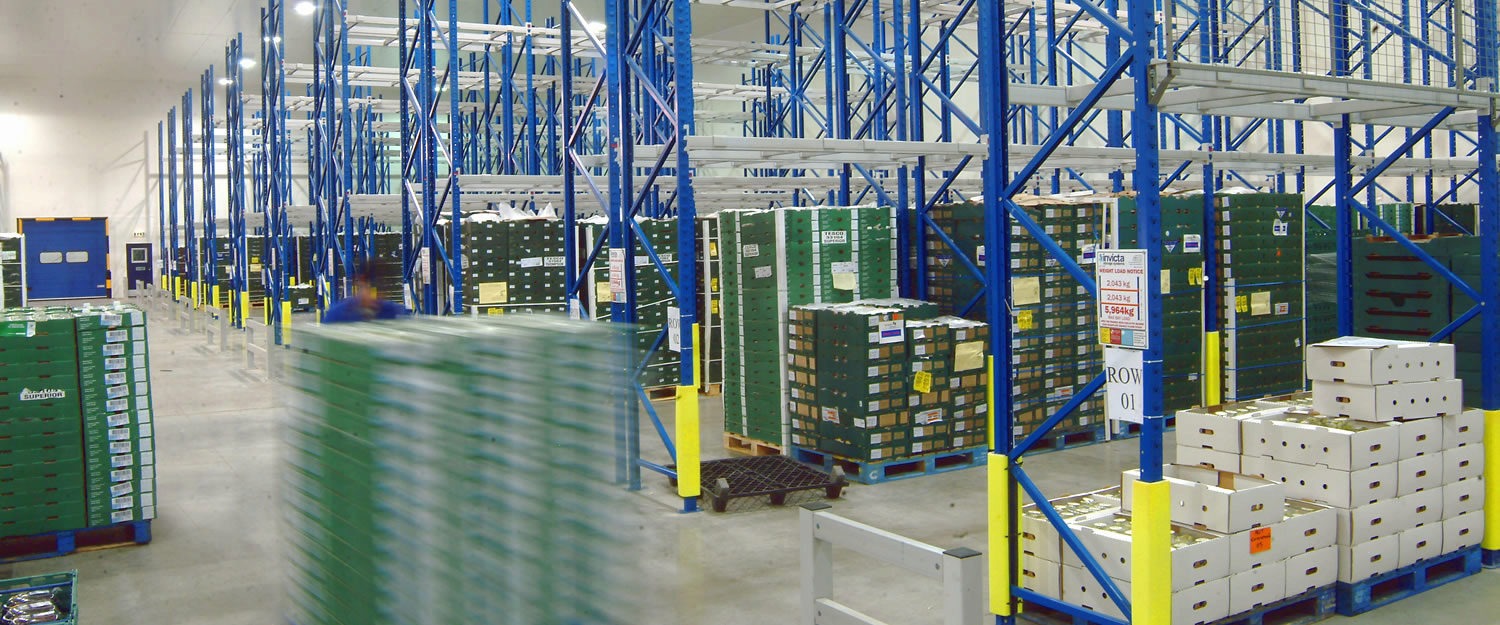For your information
You are being redirected to one of our divisional subsites which contains more detailed information on the required division. To navigate back to the main Invicta Group site, please click the link found in the footer at the bottom of the page.
Will robotics really be the end of warehouse operatives?
25th January 2022
The Skynet's the limit
Quick Quote
Contact Mick Coyne
To get a quotation or arrange a free site survey - Call Mick Coyne on
-
 UK
UK
Current location:
Quick Quote
Contact Mick Coyne
-
 UK
UK
Current location:
Scare stories about the death of the warehouse operative have circulated for decades, going right back to the first ever automation in car plants. Yet even as we sit on the cusp of a robotic revelation, few jobs seem to have been lost to automation. Robotics are still seen as unnecessary or too expensive by many companies, and where robots have been deployed, it’s often to expedite the work that warehouse operatives carry out.
But is this talk of job losses and efficiency upgrades really all just bluster? A number of different factors seem to point to a genuine change in the way many warehouses operate, and a turning point for the storage and logistics industries. Being aware of these changes may be vital for operatives and workers – as well as business owners looking to stay competitive.
Robot uprising
While people have been talking about robotics for years, there can be no doubt that uptake is increasing. Amazon have pioneered the use of robotics and autonomous vehicles throughout their supply chain, while startups have sought to offer the same technology to other, smaller firms. This has brought with it the idea of robotics as a service (RaaS), where robots are rented out by a company which takes care of the repairs, upgrades and updates.
If businesses haven’t considered robotics yet, they often have the infrastructure in place to make this transition easier. Use of complex WMS systems is now widespread, often including sensors or the capability to scan items with wireless devices in order to manage stock. These systems often have the capacity to be linked with autonomous vehicles and robots, providing them with instructions and collecting data.
None of this is to say that robotics are now commonplace, however. There are still many applications that robots famously struggle with, particularly tasks such as picking small items, which requires significant manual dexterity. And many businesses have not considered using robotics yet, or do not see the long-term benefits. Robots and their underlying systems often require a substantial capital investment – not an easy sell in the current climate.
An unstable world
The last few years have been turbulent for many businesses, who may have seen robotics and autonomous vehicles as an unnecessary experiment. A combination of Brexit planning, the pandemic and difficult market conditions have left little room for warehouse operators to be forward thinking with their storage. Yet as both Brexit and the pandemic settle, there may be an impetus to start innovating, and searching for ways to become more competitive.
A recent report by OW Robotics into the UK’s ‘robot readiness’ shows huge potential for growth in warehouse-reliant sectors, including retail, 3PL and pharmaceuticals. Their research sees robotics as not just a boon to British businesses, but a necessity. The combination of trade barriers caused by Brexit, a dwindling pool of warehouse operatives, and the rise of online shopping during the pandemic have made efficient storage more important than ever. Businesses are now needing to store more goods for longer to safeguard against delays, or turnover more stock than ever in a bid to satisfy demand nationally.
While these threats can be addressed over time, robotics and autonomous vehicles represent a way to counter them immediately, and make warehousing more agile. The ability for robots to operate for long periods of time with minimal oversight, the lack of continual investment they demand, the ‘heavy lifting’ they can provide, and the ability to locate stock rapidly all offer profound improvements in key areas – and help businesses to stay competitive.
Calculated risks
This confluence of events represents a chance for British businesses to take risks, and establish the UK as a frontrunner in the use of warehouse robotics. But what is the cost associated with this, not just in terms of capital, but the impact on jobs? On the face of it, it would seem that investing in robots would be a precursor to layoffs, as the robots would occupy jobs such as picking and quality control, and processes such as inventory management could be fully automated.
However, this is both several steps ahead of where automation currently sits, and not a necessary outcome. As much as robots may help businesses to store and ship goods more rapidly and consistently, the money saved would in many cases be reinvested in the business. Acquiring robots or autonomous vehicles means investing in specialist workers to monitor and repair them, and IT professionals to oversee those systems. Higher throughput meanwhile requires more drivers and investment in logistics, most of which cannot yet be automated.
One example of this in action is the trend towards micro fulfilment centres. These small, regional distribution hubs are increasingly being used to meet the demand for next-day and same-day shipping, holding limited quantities of a business’ most frequently sold items. While the rapid turnover and variety of SKUs means that some of this work is best automated, it also generates work in terms of local deliveries, and often seasonal work for pickers to meet demand. As faster deliveries become more commonplace, this is only likely to escalate.
—
The reality of robotics is also that many businesses will hold off on uptake. While some are either in a position to invest freely – or conversely, a position where they have to take risks – many will be more conservative. Particularly when it comes to retail and distribution, sales have remained more consistent or even risen during the pandemic, meaning that there is less impetus to innovate.
This should be seen as an opportunity to reinvest and improve online offerings, but it’s inevitable that some companies will stick to what they know. The businesses who do take advantage will likely be those that have had to adapt to survive, meeting audiences or customers on new platforms, and by new means.
For these businesses, implementing some element of automation will not only help to make them more efficient, but will also position them to be more competitive in the long term, and insure them against further risks on a regional and global level. None of this is likely to imperil the warehouse operative, who will still be needed as online commerce continues to grow – whether that’s at large distribution centres or more centralised locations.
Accreditations & Affiliations







Start your project
Tell us about your project. Please complete this form. One of our sales team will come back to you with more details. If you prefer, you can drop us an email.




Share/Like this page